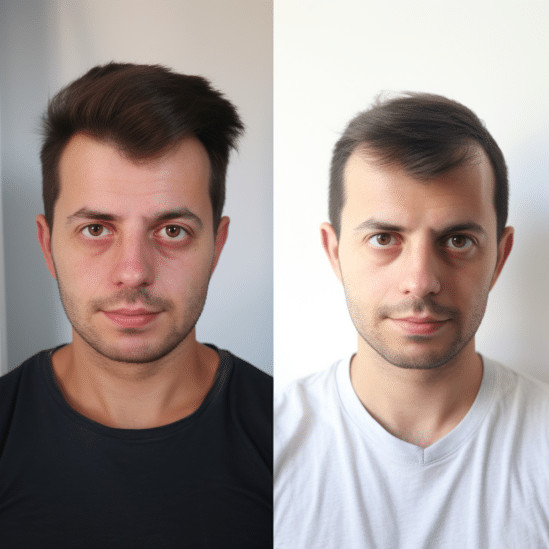Hair loss is a common concern for many people, and the search for effective solutions to reverse balding is ongoing. One popular question that often arises is whether a hair transplant hat can actually reverse balding. While there is no such thing as a “hair transplant hat,” laser hair restoration caps have gained popularity in recent years as a potential solution for hair loss.
In particular, the Xtrallux RX 352 laser cap has been highly rated and proven to be effective in reversing balding through low-level laser therapy (LLLT). Read on to learn more about this innovative treatment option and how it may help you achieve your desired results.
How to Conceal Your Hair Transplant Surgery

Undergoing a hair transplant surgery can be a life-changing decision, but it’s natural to feel self-conscious during the recovery process.
While there is no need to hide your surgery, some people may prefer to keep it private until they are comfortable with their results. Fortunately, there are ways to conceal your hair transplant surgery and maintain your privacy.
One method is to wear a hat or cap during the initial stages of recovery. This will not only help cover any visible signs of the procedure but also provide sun protection for your scalp. Just make sure to opt for loose-fitting hats that won’t put pressure on your healing scalp.
Does Wearing A Hat Cause Baldness?

Contrary to popular belief, wearing a hat does not cause baldness. However, if you wear tight hats or caps that put pressure on your scalp for extended periods, it may lead to hair breakage and thinning in some cases. This is known as traction alopecia and is more common in people who frequently wear tight hairstyles like braids or ponytails.
On the other hand, laser hair restoration caps like the Xtrallux RX 352 can actually promote hair growth by stimulating and energizing cells within the hair follicles.
What To Expect After A Hair Transplant?
After a hair transplant, it’s normal to experience some temporary side effects such as redness, swelling, and mild discomfort in the treated area. These should subside within a few days to a week. Your doctor will also provide post-operative instructions on how to care for your scalp and manage any potential discomfort.
Within the first few weeks, you may notice shedding of transplanted hairs which is a normal part of the process. New hair regrowth typically starts after 3-4 months and continues to improve over the next 6-12 months. It’s important to follow up with your doctor for any necessary touch-up procedures or adjustments.
When Should You Cover Your Head After A Hair Transplant?

After undergoing a hair transplant, it’s important to give your scalp time to heal and recover. One way to help with this process is by covering your head during the initial stages of recovery. But when exactly should you cover your head after a hair transplant?
The general rule of thumb is to wait at least 48 hours before covering your head with any type of hat or cap. This gives your scalp enough time to heal and reduces the risk of irritation or infection. It’s also recommended to avoid wearing tight-fitting hats or caps that may put pressure on the treated area.
Can I Wear A Helmet After My Hair Transplant?

Many people who undergo a hair transplant often wonder if they can resume their normal activities, such as wearing a helmet for sports or riding a motorcycle, after the procedure. The answer is yes, but there are some important factors to consider before putting on your helmet post-surgery.
First and foremost, it’s essential to wait until your scalp has fully healed before wearing any type of helmet. This usually takes at least 14 days, depending on how quickly you heal and the extent of your surgery.
Wearing a helmet too soon can increase the risk of infection or damage to the newly transplanted hair follicles.
What does science say about hats and baldness?

Studies and research have been conducted to determine the relationship between wearing hats and baldness. While it is a common belief that wearing hats can cause balding, there is actually no scientific evidence to support this claim. In fact, studies have shown that wearing hats does not contribute to hair loss in any way.
One study published in the International Journal of Trichology examined the scalp health of men who frequently wore tight-fitting hats compared to those who did not. The results showed that there was no significant difference in scalp conditions between the two groups.
Which came first? The hat or the hair loss?
The idea that wearing hats can cause male hair loss may stem from a common observation – many bald men often wear hats. However, it’s important to note that male pattern baldness is a genetic condition and not directly caused by external factors like wearing hats.
So while there is no evidence to suggest that wearing hats causes baldness, individuals with male pattern hair loss may choose to wear hats as a way to cover up their temporary hair loss. This decision is completely personal and does not affect the underlying cause of age-related hair loss.
How Can a Laser Cap Reverse Balding?

A laser hair cap like the Xtrallux Extreme RX 352 can reverse balding by utilizing low-level laser therapy, or LLLT. LLLT treatment is a non-invasive and painless option that has been used to treat high blood pressure male and female pattern hair loss.
During the treatment, the red laser light stimulates and energizes cells within the hair follicles, stimulate hair growth and improving scalp health. This process also helps to prolong the growth phase of existing hairs, preventing them from falling out prematurely.
Reverse Balding with Xtrallux RX 352

If you’re interested to treat hair loss and improving the appearance of thinning hair areas on your scalp, the Xtrallux Extreme RX 352 laser cap may be a great option for you.
Not only is it a non-invasive and painless treating hair loss, but with its high number of laser diodes, it also has the potential to provide significant results.
At Best Hair Transplant, we are dedicated to helping individuals find the best solution for their unique hair loss needs. With our limited-time offer of a $1,000 instant rebate on the purchase of an Xtrallux RX 352 lasercap, there’s no better time to start your journey towards thicker and healthier hair.
Call Us for Your Xtrallux Lasercap

Don’t let hair loss hold you back any longer. Contact us today to learn more about the Xtrallux Extreme RX 352 laser cap and how it can help reverse hair loss. Our team of experts at Best Hair Transplant is dedicated to helping individuals achieve thicker, healthier hair through safe and effective treatments like the Xtrallux lasercap.
We also offer a $1,000 instant rebate on the purchase of an Xtrallux RX 352 lasercap, making this a great time to start your journey toward fuller hair. Don’t wait any longer, contact us now for a free virtual consultation and take the first step towards reversing your balding with Xtrallux.
FAQs
Should I get a hair transplant if I’m still balding?
It is not recommended to get a hair transplant if you are still experiencing active hair loss. This is because the transplanted hairs may also be affected by future hair loss, resulting in an uneven or unnatural appearance.
How much does 5000 hair grafts cover?
This can vary depending on the extent of further hair loss and the density of your natural hair. In general, 5000 hair grafts can cover a large area, such as the entire top of the head, or provide significant coverage for hair-thinning areas.
Why do I look more bald after hair transplant?
It is common for the transplanted hair to fall out in the weeks following a hair transplant. This is a normal part of the healing process and does not indicate that the procedure was unsuccessful.
